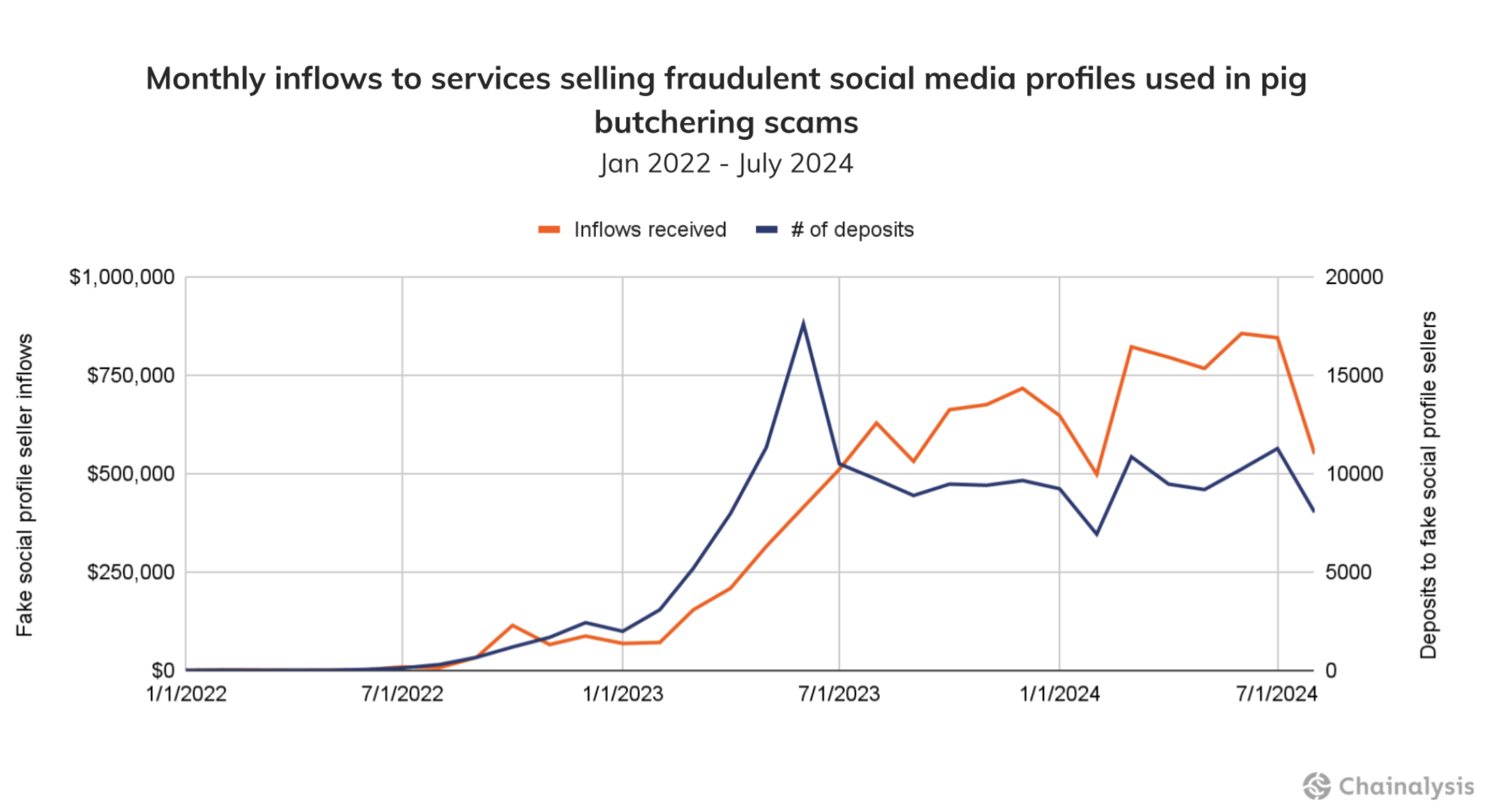 New analysis of blockchain activity shows scammers are needing less time to obtain crypto payments and are seeing higher payoffs per scam.
New analysis of blockchain activity shows scammers are needing less time to obtain crypto payments and are seeing higher payoffs per scam.
I continue to repeatedly cover breakdowns of cybercrime activity from the folks at Chainalysis because it represents an unbiased view that some security vendors may inherently have (because their data is based on what their solutions do and don’t discover).
In Chainalysis’ 2024 Crypto Crime Mid-year Update Part 2, We find some surprising details that should have organizations a bit worried:
The average scam lifespan is down 58% from last year to just 42 days. On its own, this doesn’t sound entirely terrible; it could just mean that scammers are getting scared off or being unsuccessful and giving up more quickly, right?
Wrong.
Take a look at the graph below as just an example of what Chainalysis is seeing. In essence, inflows of scam “revenue” are at an all-time high, and yet the number of deposits is somewhat flat — meaning, more money is being made per scam:

Source: Chainalysis
Put these two data points together and you realize scammers are able to make money faster, allowing them to move onto the next scam.
Many of these scams use social engineering, current events and phishing techniques as the means to launch — something thwarted by new-school security awareness training designed to educate users within an organization how to identify even the most sophisticated well-planned scams.
KnowBe4 empowers your workforce to make smarter security decisions every day. Over 70,000 organizations worldwide trust the KnowBe4 platform to strengthen their security culture and reduce human risk.
 The ModStore Preview includes:
The ModStore Preview includes:




